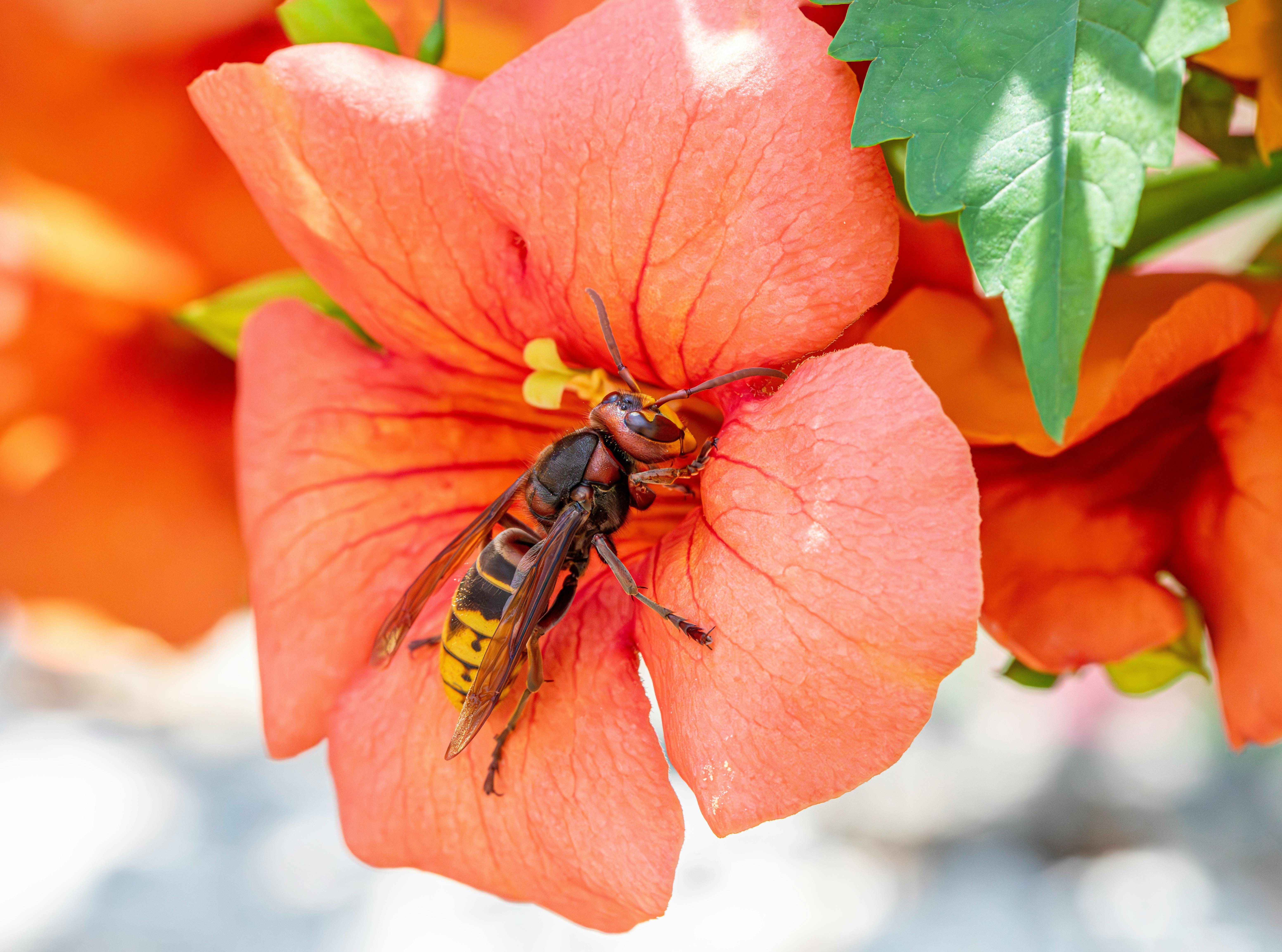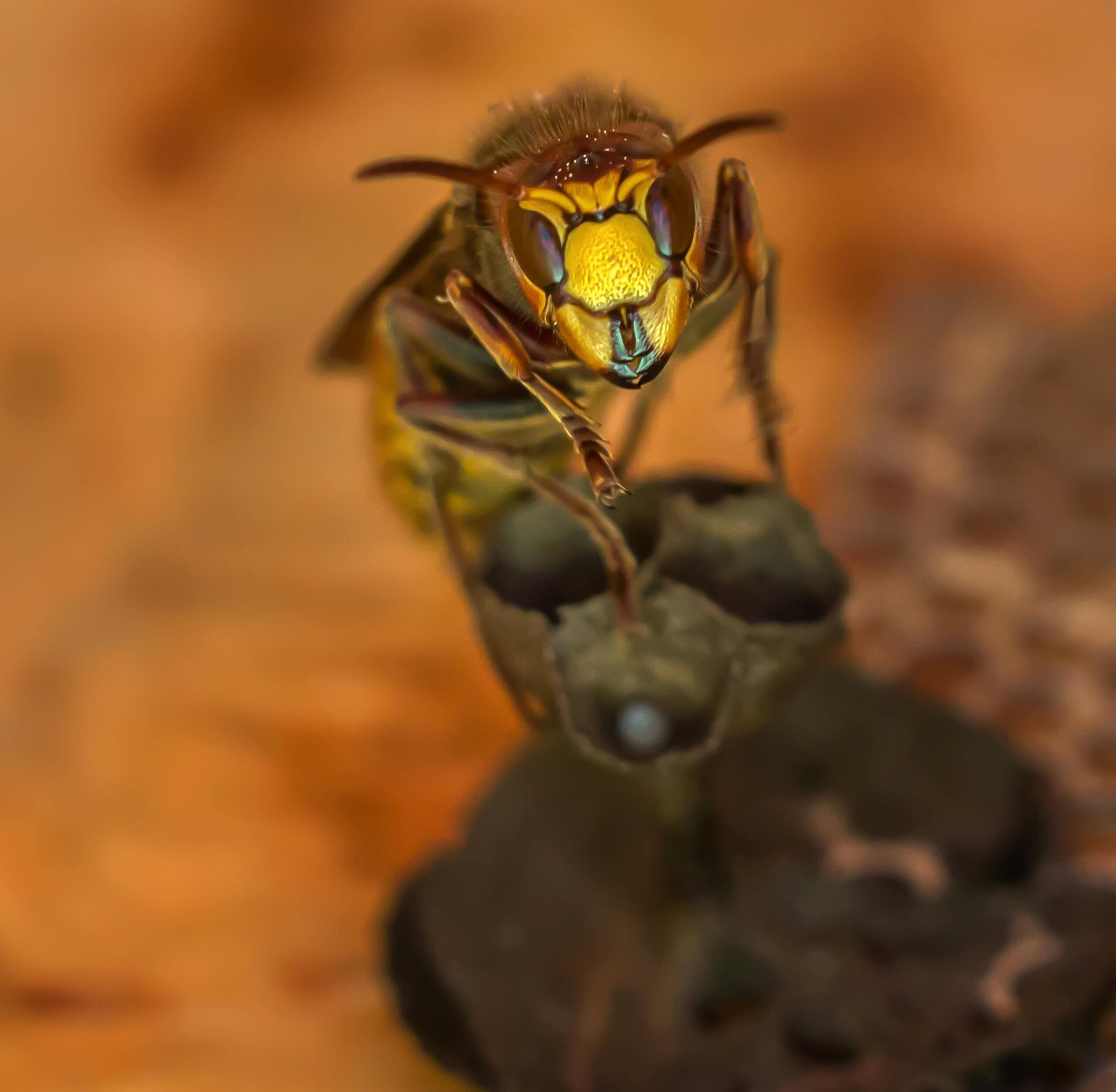Understanding Hornissennest: The Fascinating Life of Hornets
The Anatomy of a Hornissennest
Hornissennest, or hornet nests, are remarkable structures that house these social insects. Often mistaken for wasps, hornets are actually part of the wasp family but can be distinguished by their larger size and unique coloring. Typically, hornets build their nests in trees, shrubs, or even under eaves of houses. These nests, made from chewed wood pulp mixed with saliva, can grow to impressive sizes, sometimes housing thousands of individuals. The intricate layers of the nest, which can be seen in the image below, provide insulation and protection for the larvae and adult hornets.

Why Hornets Build Nests
One key reason hornets create nests is for reproduction and safety. Each nest typically serves a single queen hornet and her offspring. Throughout the warm months, the queen will lay eggs in individual cells within the nest. As the temperature drops, the colony begins to dwindle, making the hornissennest less active and often abandoned by fall. Understanding the lifecycle of hornets helps demystify their behavior and the purpose of their nests.
Materials Used in Nest Building
Hornets utilize a variety of materials for nest building, primarily wood fibers. They collect fibers from decayed wood and mix them with their saliva to create a pulp, which they then shape into the nest. This method of using natural materials demonstrates the connection hornets have with their ecosystem. The ability to transform wood into a protective structure showcases the ingenuity of these insects. Moreover, the unique construction technique allows the nest to withstand tough weather conditions.
The Social Structure of Hornet Colonies
Understanding the social structure within a hornissennest is crucial for grasping how these colonies function. Hornet societies are hierarchical, with the queen being the central figure. The queen is responsible for laying eggs and ensuring the colony’s growth. Worker hornets, which are sterile females, perform duties such as foraging for food, caring for the larvae, and maintaining the nest. In this section, we will explore the roles of different members within the colony.
The Role of the Queen Hornet
At the heart of any hornissennest is the queen hornet. Her primary responsibility is to lay eggs, and she can produce hundreds, even thousands, over a single season. The success of the colony hinges on her health and productivity. Typically, the queen emerges in spring and begins to build her nest alone, laying the first batch of eggs soon after. Once the first workers hatch, they assist the queen in expanding the nest and caring for the next generations.
Worker Hornets: The Backbone of the Colony
Worker hornets play a pivotal role in maintaining the colony’s activities. These sterile females take on various responsibilities after they emerge from their cells. For instance, they forage for food, primarily protein sources such as insects, and bring it back to the nest to feed the larvae and the queen. Workers also defend the nest against intruders, highlighting their protective nature. Their collective effort ensures the survival and growth of the colony throughout the warmer months.
Potential Hazards of Hornissennest Encounters
While hornets contribute to the ecosystem through pollination and pest control, encounters with them can be dangerous, particularly for those allergic to their stings. Understanding how to coexist with these insects is essential for safety. This section provides important insights into the potential hazards presented by hornets and how to minimize risks.
Identifying a Hornet Nest
Recognizing a hornissennest is the first step in understanding how to manage encounters with hornets. These nests are often large, rounded, and grayish in color, with a paper-like texture. They may hang from trees or structures, sometimes resembling large, puffy balloons. Spotting these nests early can help individuals avoid unintentional disturbances, which often lead to aggressive defensive behavior from worker hornets. If you see a nest, observe it from a safe distance to determine its activity level.
What to Do If You Encounter a Hornissennest
In the event of an encounter with a hornissennest, it’s crucial to approach the situation with caution. Avoid sudden movements and noises, as hornets can become agitated easily. If you need to remove a nest, consider hiring a professional exterminator. They have the tools and knowledge to handle the nest safely and efficiently, minimizing risk for everyone involved. Understanding these safety measures is vital for anyone living near hornet habitats.
Benefits of Hornets to the Ecosystem
Despite their notorious reputation, hornets play a significant role in maintaining ecological balance. Their predatory nature helps control pest populations, proving beneficial for agricultural practices. In this section, we’ll dive deeper into the positive impact hornets have on the ecosystem.
Pest Control Provided by Hornets
Hornets, being fierce predators, significantly contribute to natural pest control. They feed on various insects, including caterpillars, flies, and aphids, which helps keep plant populations healthy. By naturally regulating pest populations, hornets minimize the need for chemical pesticides, promoting a more environmentally friendly approach to agriculture. This balance fosters healthier crops and supports biodiversity within their habitats.
Pollination Contributions of Hornets
Additionally, hornets can also contribute to pollination, although not as efficiently as bees. As they venture out for food, they inadvertently transfer pollen between flowers. This transference is crucial for many plants, enhancing their reproductive success. Understanding the multi-faceted role hornets occupy within ecosystems emphasizes the importance of respecting and conserving these insects, despite the risks they may pose to humans.
Key Takeaways
- Hornissennest structures serve as vital habitats for hornet colonies, deeply connected to their lifecycle.
- The social hierarchy within a hornet colony, led by the queen, is essential for its survival.
- Conscious encounters with hornets involve recognizing their nests and knowing how to respond safely.
- Hornets play a crucial role in pest control and contribute to the pollination process, supporting natural ecosystems.
FAQ
1. Can hornets be beneficial for gardens?
Yes, hornets can be beneficial for gardens due to their role in pest control. By preying on harmful insects, they help protect plants from infestations. Balancing their presence can promote a healthier garden environment.
2. What attracts hornets to my home?
Hornets are typically attracted to sweet foods, protein sources, and potential nesting sites. Food remnants left outside or accessible garbage can draw them in. Keeping outdoor areas clean and securing trash can help reduce their presence.
3. How can I safely remove a hornissennest?
For safe removal of a hornissennest, it’s best to contact pest control professionals. They have the expertise to handle the situation effectively while ensuring safety for people and pets around the area.
4. Are hornets aggressive towards humans?
Hornets can be aggressive if they feel threatened, particularly near their nests. Disturbing a nest can provoke a defensive response, leading to potential stings. It’s advisable to observe nests from a distance.
5. How long do hornets live?
The lifespan of a hornet varies. Queen hornets can live for several years, while worker hornets typically live for a few weeks to several months, depending on their role within the colony and environmental conditions.
